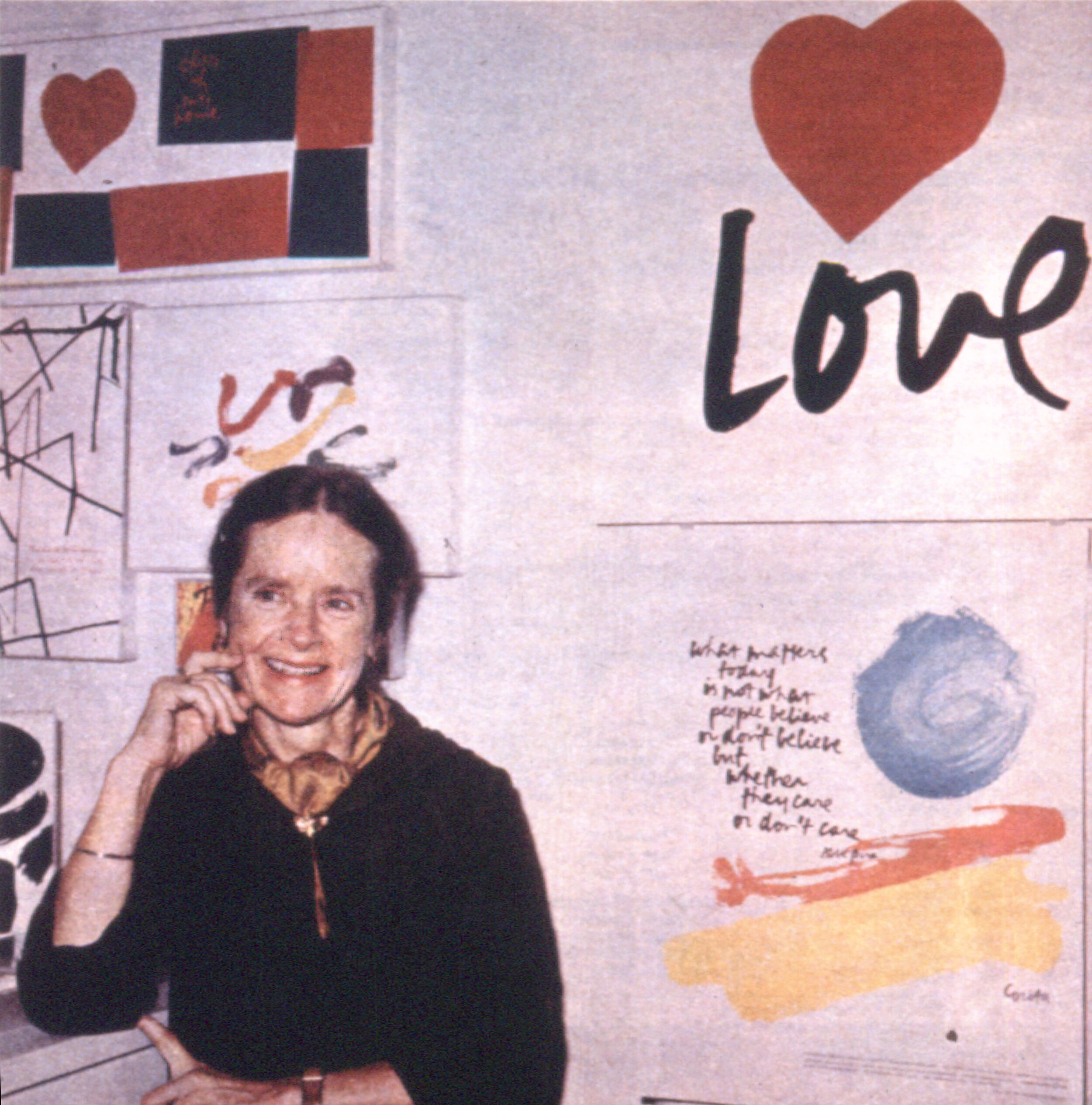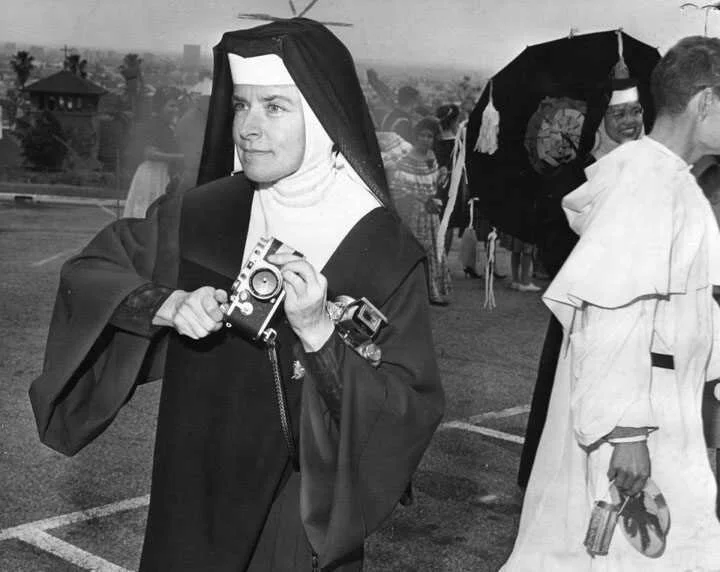Saving the Legacy of Los Angeles’ Pop-Art Nun Corita Kent
Corita Kent. Courtesy of Corita Art Center.
An artist, educator and Roman Catholic nun, Corita Kent was known for her pop art made to confront social injustice. Active from the 1950s to her death in 1986, she created screen prints covering issues of racism, poverty, and misogyny and her typography, print and day-glo colors proved incredibly influential for generations to come. Feeling it important for her art to be affordable and widely available to all, Kent was an early adopter of serigraphy, also known as silk screening, and particularly enjoyed the medium for that reason. Her most well known works include a combination of bold colors, shapes and catchy yet poignant statements which often found their way to Civil Rights and anti-war protests.
Her Franklin Avenue studio in Los Angeles, slated for demolition earlier this summer, is currently under consideration for designation as a Historic-Cultural Monument in Los Angeles, thanks to a compelling campaign created by the Corita Art Center, a nonprofit which houses one of the largest collections of Corita’s works and related materials. Their campaign, “Save Corita’s Studio,” urges citizens to take action in an attempt to preserve the legacy of the famed California artist and the history created in that very studio. Corita’s studio was a cultural hub for the city of Los Angeles, where she worked throughout the ‘60s and created some of her most iconic work including Get with Action, My People, and Power Up, which set the stage for the Pop-art movement not only in Los Angeles, but in America as whole. Currently home to a dry cleaner, the studio was slated for demolition to free up space for additional parking for a project which would convert the Rite Aid into a Lazy Acres Natural Market. As of today, LA City Council has 65 days left to vote in favor of its historic designation or allow it to be torn down by private developers.
Corita Kent, the cry that will be heard, 1969, serigraph, 23 x 12 in., photograph by Arthur Evans, Corita Art Center, Immaculate Heart Community.
Corita Kent. Courtesy of Corita Art Center.
Born Frances Elizabeth Kent in Dodge, Iowa in 1918, Corita Kent joined the Immaculate Heart Order at the early age of 18. Alongside friends and colleagues Charles and Ray Eames, she went on to teach and lead the Art Department at Immaculate Heart College in Los Angeles where she influenced a generation of young artists through her art and teaching. Fiercely believing that everyone is an artist, she developed a radical curriculum designed to arouse and embolden her students’ creative spirits by helping them look at the world in new ways. Her book, Learning by Heart: Teachings to Free The Creative Spirit, helps readers do just that.
Corita Kent, american sampler, 1969, serigraph, 23 x 12 in., photograph by Arthur Evans, Corita Art Center, Immaculate Heart Community.
Evolving from the figurative and religious in her early career to incorporating advertising images and slogans, song lyrics, biblical verses, and literature, Kent was influenced by the contemporary art and issues of her time. Dubbed the “joyous revolutionary” by artist Ben Shahn, she became increasingly political throughout the ‘60s with many of her works remaining just as relevant today as they were 50 years ago. Kent remained active in social causes until her death in 1986, by then having created almost 800 serigraph editions, thousands of watercolors, and innumerable public and private commissions.
While an application for designation as a Historic-Cultural Monument is officially under review, there’s no knowing what will happen to the studio. It’s worth noting that only 3% of the buildings deemed historical commissioned monuments in Los Angeles are associated with women or LBGTQ+ heritage. Saving Corita’s studio would be an important win in keeping female artists and women in the arts recognized, respected, and celebrated for their important contributions.
Please visit corita.org/action and sign the letter of support to help Save Corita’s Studio.



